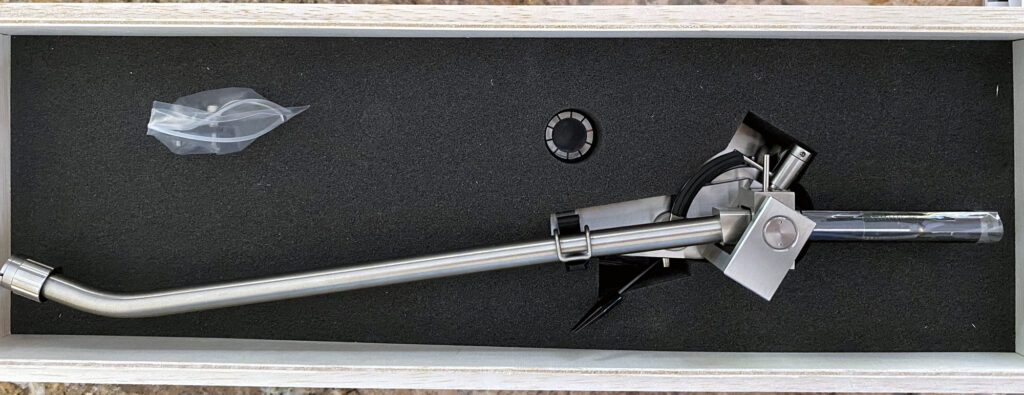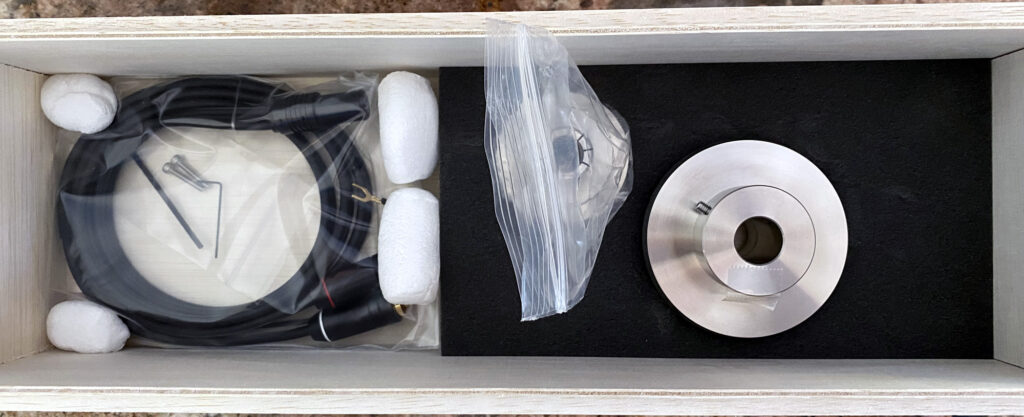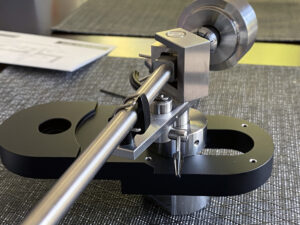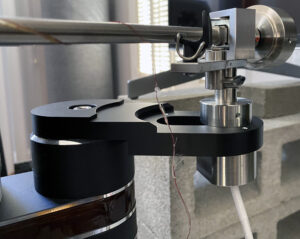The tagline for Glanz is “A legendary brand is reborn” and it is not an exaggeration. The Glanz name was first used in 1972 by the Mitachi Onkyo corporation when a twenty-three-year-old Masataka Hamada joined and developed the company’s first moving magnet cartridges. He went independent in 1980 while continuing development of audio technologies for both Onkyo and Victor Company of Japan (JVC). During this period, he co-designed the two-channel system variant of the four-channel X-1 system and Z-1 four-channel CD-4 MM cartridges for Onkyo and JVC, along with numerous tonearms and audio and radio product prototypes. It was in 2008 that Hamada relaunched the Glanz brand with the MH-124S tonearm.
The MH-1200S, the subject of this review, was launched in 2021 and Rick Mak of fellow online review magazines Parttimeaudiophile and Tone Publications fame, in conjunction with North American importer Lawrence Lin of Excel Stereo, invited me to review it. Rick also sent his analogmagik brand of silver tonearm leads cables along. Thank you, Rick and Lawrence. The analogmagik leads were used primarily in this review.
There are eleven tonearms in the company’s model lineup, and half are given the S designation, meaning poly fiber lining is utilized inside the arm tube instead of soft ABS plastic from the non-S model for superior vibration control. The $28,463 MH-124S Premium top model adds silver wiring, a carbon fiber layer that wraps the poly fiber inner lining, which wraps the silver wire in silk thread. There are three twelve-inch models being offered. The MH-1200S is the second to the top model, after the MH-124S. All Glanz arms are made of stainless steel, utilizing the S-type, curved arm tube design as favored by most Japanese tonearm manufacturers.
Hamada explains in the company brochure that signal loss arising from vibrations in tonearms is rampant and he expresses his concept in a formula that goes: amplitude of the needle [minus] vibration of the cartridge body [equals] power generation signal output. Put simply, “the vibration or loss of the cartridge body impairs the sound [reproduction] and gives rise to electric signal loss. The loss makes the arm vibrate, and the reflected sound produced by the vibration returns to the cartridge as reverberation, and it is played back.” Thus, as a tonearm manufacturer, his first priority is to cut off the vibration coming down from the cartridge. To this end, Hamada’s first choice of metal is the regular 304 stainless steel, and the detachable headshell is made out of a single stainless steel structure for minimal vibration and weight.
Unlike lead that is both massive and soft that ends up absorbing frequencies and making music dull, or fiber glass that is very rigid with the resultant resonant nature, Hamada explains, the stainless steel arm tube at carefully calculated thicknesses and shapes is “both hard yet ductile and combines these conflicting qualities in just the right way.” Dampening materials are then applied to various points, such as carbon in the MH-124S Premium’s headhsell or rubber in that of the rest of models, carbon or felt again in the inner surface of the arm tube and insulation of the axis point from mechanical vibrations using rubber, plastic and aluminum.
The tonearm’s fulcrum is made up of four precision stainless steel bearings with the lower bearing made of high-precision rotary thrust bearing that exudes strength and stability for superior tracing capability with cartridges of all masses. Dispensing with adhesives, the metallic parts are manufactured to such exacting dimensions and angles that the company is able to hard press them together, thus cementing a rigidity approached by few. Even the detachable headshell is made out of a single stainless steel structure for minimal vibration and weight. Further demonstrating its audiophile credence, Glanz designed the tonearm in such consideration as to enable user discretionary removal of anti-skate mechanism, arm rest and arm lifter for a claimed further reduction in distortion. Readers using cartridges that track at 3 grams could omit the use of anti-skate mechanism altogether.
The MH-1200S was auditioned with cartridges such as the discontinued Denon DL-103SA, DL-S1, both new-old-stock, the Soundsmith Paua II, the Miyajima Destiny, the Ortofon Meister Silver G MkII SPU and the Audio Note UK IO LTD field-coil.
- (Page 1 of 2)
- Next page →









There is a tiny screw at the underside of the armtube behind the SME collar which can be loosened so that the collar can be rotated to allow azimuth alignment.